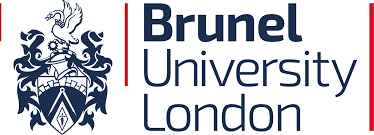Brunel University London: Nuclear test veteran family trios enabling genetic studies described
The 49 nuclear test veterans in the study were selected from those of the original cohort of more than 20,000 who were present at the sites, including Christmas Island and the Australian outback, where the UK tested nuclear weapons in the 1950s and 60s. The study also included, for comparison purposes, a matched control group of 42 veterans of similar age and military service profile who hadn’t been at test sites.
Selecting veterans for invitation to the study was a complex task because available records were limited. “When the tests were conducted, not all veterans were issued with film badges to record how much radiation, if any, they were exposed to,” explained Dr Rhona Anderson, the radiation biologist from Brunel University London who led the study, which was supported by the Nuclear Community Charity Fund (NCCF). “Very few nuclear test veterans have any recorded information on dose. So the study was designed to invite test veterans to participate based on their potential for radiation exposure, such as the number of test sites attended and various high-risk roles undertaken at the time.”
Because the study is looking into whether any potential genetic changes are present in children as a result of their father’s historical exposure to ionising radiation, the researchers needed blood samples from family trios: the father, the mother and their surviving biological child conceived soonest after the father returned from nuclear test sites. To comply with data protection law, participants were invited through their GPs in a multi-step recruitment process.
“Recruitment to the study was a challenge,” said Dr Anderson. “Overall, 14% of invited nuclear test veteran families and 4% of invited control families took part. This low response rate was anticipated due to the advanced age of veterans and the need to recruit complete family trios, but this may have resulted in bias related to reasons to participate, for both test and control groups, such as concerns about their health or that of family members.”
Similar proportions of test and control groups reported ever smoking, drinking alcohol regularly, having X-rays, CT scans or other medical scans involving radiation. Statistically significant differences between the test and control veterans included a higher proportion of nuclear test veterans who said that at least one of their children or grandchildren had been born with a congenital anomaly – sometimes known as birth defects, such as of the heart or of the limbs – and a higher proportion of control veterans who reported chemical or radiation exposure through their jobs. Nuclear test veterans may have been more likely to take part if they thought their family had been adversely affected, whereas other servicemen may have been more likely to participate if they were concerned about their chemical or radiation exposures.
“These are unique families whose contribution has enabled our study team to carry out genetic studies, for which we and the community are grateful,” Dr Anderson added, referring to the genetic analysis work that will be reported on in papers published later this year.
The Genetic and Cytogenetic Family Trio study is led at the Centre for Health Effects of Radiological and Chemical Agents (CHRC) at Brunel University London, and also involves the University of Leicester and the London School of Hygiene and Tropical Medicine.

